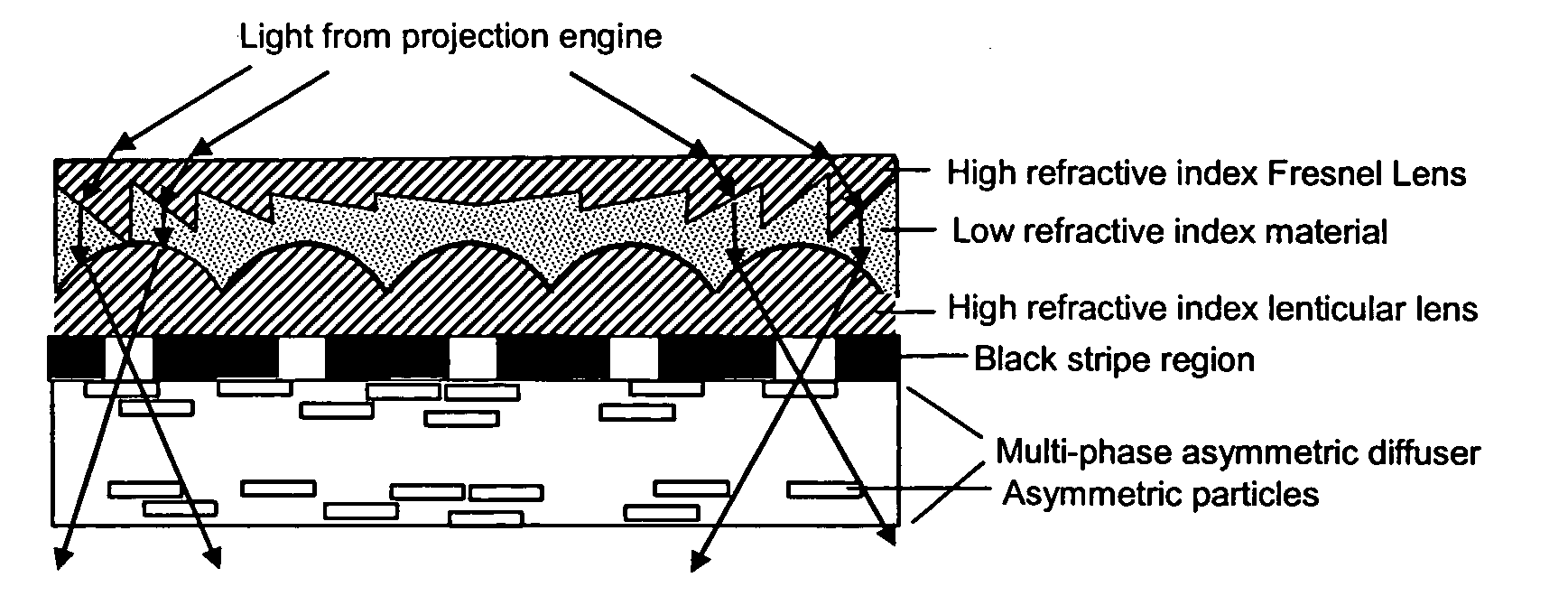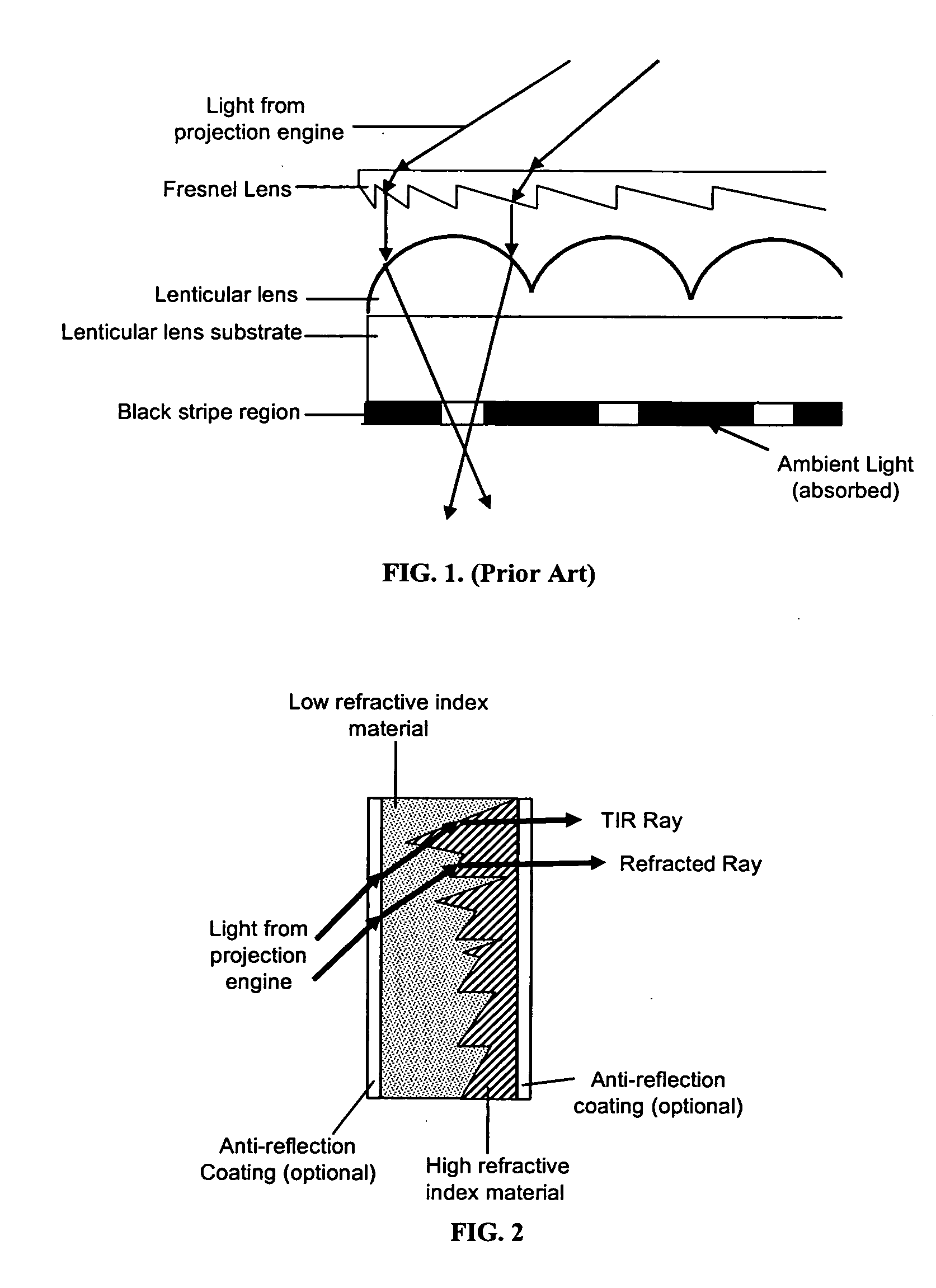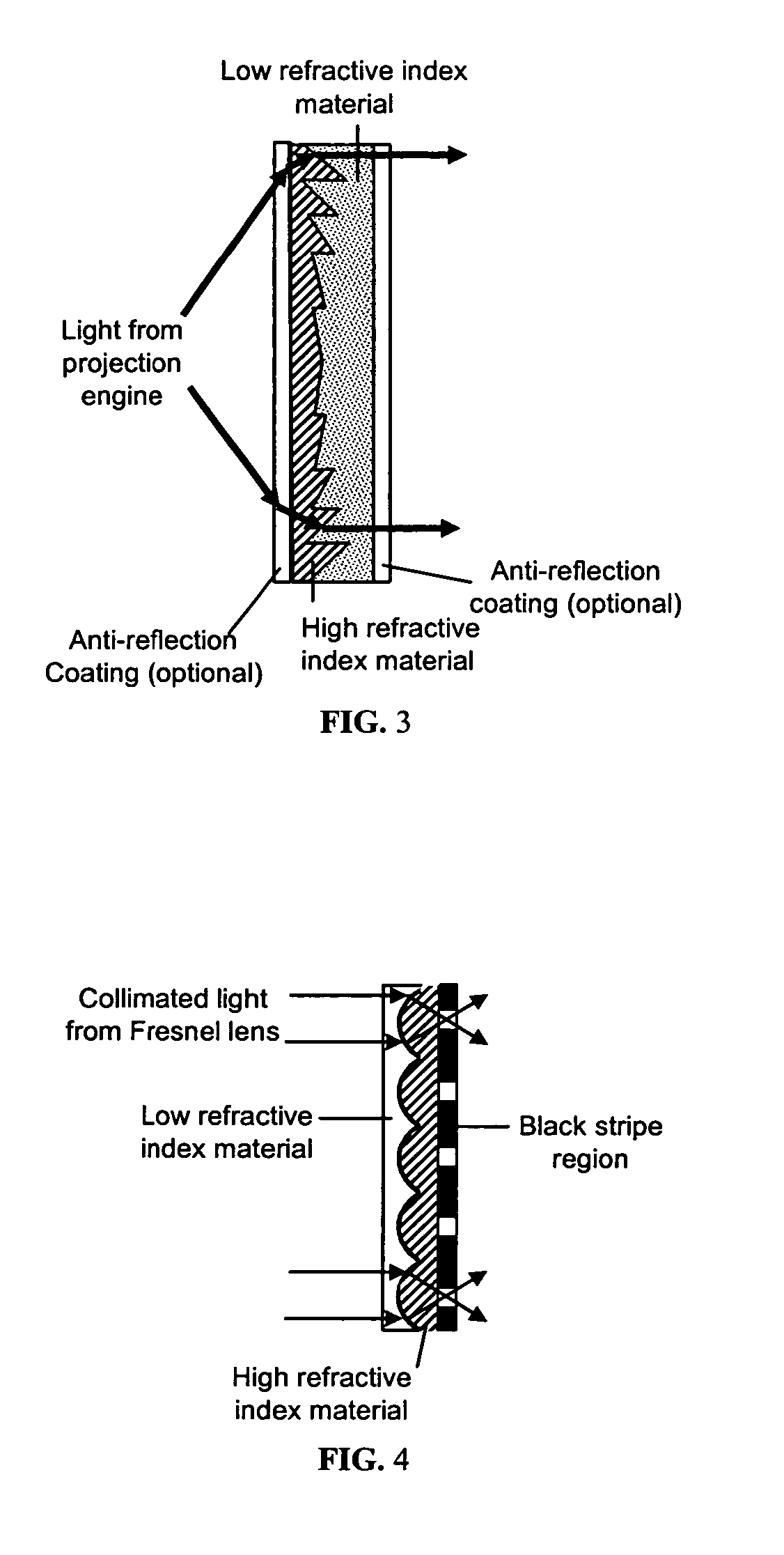High contrast optical path corrected screen
a technology of optical path and optical path, which is applied in the field of optical path corrected imaging screen, can solve the problems of reducing the contrast of the screen, reducing the quality of the image, and increasing so as to achieve the effect of improving the contrast, and reducing the cost of manufacturing
- Summary
- Abstract
- Description
- Claims
- Application Information
AI Technical Summary
Benefits of technology
Problems solved by technology
Method used
Image
Examples
example 1
[0110] The planarized Fresnel lens of FIG. 3 can be created by casting a Fresnel lens structure into a high refractive index material such as Nitto Denko's high-refractive index thermosetting polymer capable of reaching a refractive index of 1.76 (See Nitto Denko Press Release, 11 Nov. 2003, at http: / / www.nitto.com / company / release / 03—11—11 / index.html). A planarization layer is coated onto the lens side of the planarized Fresnel lens and consists of a low refractive index material such as an aerogel. Since the planarized Fresnel lens has a substantially flat surface on either side, an anti-reflection coating can be applied to either side. The lens features should be designed to reflect or refract based on the refractive index differences between the high and low refractive index materials.
example 2
[0111] The planarized lenticular lens of FIG. 4 can be created by casting a lenticular lens structure into a high refractive index material such as Nitto Denko's high-refractive index thermosetting polymer capable of reaching a refractive index of 1.76 (See Nitto Denko Press Release, 11 Nov. 2003, at http: / / www.nitto.com / company / release / 03—11—11 / index.html). The lenticules should be designed to provide the correct focal distance, normally at the edge of the film, and the lenticules may be aspherical in shape. A planarization layer is coated onto the lens side of the planarized lenticular lens and consists of a low refractive index material such as an aerogels. An anti-reflection coating can be applied to the low refractive index side. A black stripe region is optically coupled to the high refractive index side of the planarized lenticular lens. This may be light sensitive material such as Chromalin from DuPont. After exposing to UV light, the Chromalin can be processed to create bla...
example 3
[0112] The high contrast optical path corrected screen of FIG. 9 can be created by casting the traditional Fresnel lens on a substrate that contains the planarized lenticular lens of Example 2. Other techniques such as embossing may be used. An asymmetric diffusion diffuser is optically coupled to the lenticular lens by lamination. A light sensitive material such as Chromalin from DuPont is optically coupled to the asymmetric diffuser. Diverging light from UV light source is directed toward the Fresnel lens. The light source is positioned in a location and directed at an angle to the screen that simulates the angle and direction of the light from the end-use projection engine. The light is refracted / reflected to near collimation by the Fresnel lens and directed to the planarized lenticular lens. The planarized lenticular lens focuses the light in the horizontal direction into the asymmetric diffuser. The asymmetric diffuser spreads the light in the vertical direction and does not su...
PUM
 Login to View More
Login to View More Abstract
Description
Claims
Application Information
 Login to View More
Login to View More - Generate Ideas
- Intellectual Property
- Life Sciences
- Materials
- Tech Scout
- Unparalleled Data Quality
- Higher Quality Content
- 60% Fewer Hallucinations
Browse by: Latest US Patents, China's latest patents, Technical Efficacy Thesaurus, Application Domain, Technology Topic, Popular Technical Reports.
© 2025 PatSnap. All rights reserved.Legal|Privacy policy|Modern Slavery Act Transparency Statement|Sitemap|About US| Contact US: help@patsnap.com



